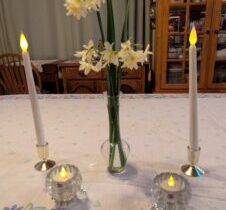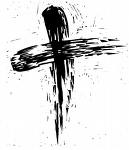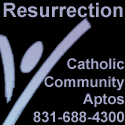A Refiner’s Fire – Purify and Prepare
 Aluminum foil is one of those products that has come to be so commonly used that no one thinks much about where it comes from and how it’s made. But that wasn’t always the way it was.
Aluminum foil is one of those products that has come to be so commonly used that no one thinks much about where it comes from and how it’s made. But that wasn’t always the way it was.
Here’s a bit of background. Aluminum is the twelfth most common element in the universe. It reacts well with oxygen, and when they combine on the surface, aluminum shines like polished silver. It is soft, easy to shape, and non-magnetic. Many cooking pots used today are made of aluminum, which heats easily. (This poses a challenge for those seeking to use induction stoves! They won’t heat, because induction is based on magnetic force.)
Aluminum is found in the crust of the earth, mixed into a kind of rock known as bauxite. This mineral is lighter than iron or steel, so has historically been extensively used in aviation – for building airplanes. It has to be separated from the rock in order to be used. It must be refined.
When I grew up, most of the men in my area of town worked either for the railroad or for Kaiser Aluminum, refining aluminum from bauxite. The pot lines were located just outside the town immediately to the north of our community. Once the ore was liquid, it was trucked to another plant east of town. There it was poured and shaped into huge rolls of solid aluminum. Those rolls were then shipped to plants elsewhere, rolled increasingly thinner, and formed into the metal we use today for airplanes, cars, cooking pots, and aluminum foil!
The pot lines were extraordinarily hot places. There were sixteen buildings with potlines. If a bit of metal fell on the ground, everyone knew not to touch it. It would be burning hot. When the lines were open so families and friends of the workers could visit and see, we were all told never to touch anything shiny or metal on the ground. The potlines were heated and the metal was liquid. It was stiflingly hot inside the buildings. Over 100 million pounds of aluminum were produced there in the first year alone.
The plant has since closed, as has the railroad yard. A lot of clean-up work has been required to rid the area of toxins produced by both. Some toxins are still in the soil and protective layers have been added to keep them where they are rather than letting them get out into the waterways again. And life has gone on …
Reading from the book of the Prophet Malachi today, I was reminded of these potlines and the refiners’ fires, the fuller’s lye. (Fuller’s lye is also known as potash – potassium hydroxide. It’s very caustic. Sodium hydroxide is another very common form of lye, known as soda lye. Don’t even think of drinking it! Both are used to make soaps.) Processing of the bauxite includes use of lye to break apart its components and separate out the aluminum ore.
Malachi speaks of the messenger of the Lord who will come ahead of the messenger of the covenant. The first messenger is to prepare the way of the Lord, so the messenger of the covenant can enter. This one will come with power – like the refiner’s fire – and will patiently refine and purify the Levites, the priestly class. Why purify them? So they can offer sacrifices on behalf of the people that will be pleasing to the Lord. (Mal 3:1-4)
The words of Malachi were recorded around 500 years before the birth of Jesus. Yet they are part of a transition in the long story of reconciliation between God and humanity. The purification of which the prophet speaks will result in a renewal of the Lord’s joy in the offerings and love of the community.
And then, the long wait continued.
Jesus’ birth marked another transition in this history, as he began his life as a child of the Covenant. The Feast of the Presentation celebrates an event required by the Covenant in the life of Jewish baby boys. When the first boy was born to a family, tradition said the child belonged to God. The parents of the family offered a sacrifice of thanksgiving for the birth of the child and in return, received the right from God to keep him as their own. They didn’t have to give him to the Temple to be raised there, apart from his family.
Joseph and Mary took Jesus to the temple to offer this sacrifice on his behalf. This was not the time of his circumcision. That was a different custom and timeframe. They expected to offer the sacrifice and leave, as any other couple would expect. Additionally, it was forty days after his birth, so a sacrifice was to be offered to allow Mary to re-enter the life of the community, to “purify” her after her pregnancy. Accordingly, this day we remember as the Feast of the Purification of Mary was a doubly important day in their lives.
Joseph and Mary got a surprise that day in the Temple. An old man, Simeon, met them at the Temple. He had been promised by the Lord that he would not die before seeing the Christ of the Lord – the anointed one who was to come. When he saw Joseph and Mary, he knew this child was the one he was sent to meet. He took Jesus in his arms and gave thanks. “Now, Master, you may let your servant go in peace … for my eyes have seen your salvation.” More than just the salvation of Israel, Simeon proclaimed that this child would be “a light for revelation to the Gentiles and glory for your people, Israel.”
Wow. Not just Israel, but all the peoples of the world!
Simeon was not a fool, however. He spoke directly to Mary of the trials that would come to her personally because of the identity of her child. Her child’s life would be a source of contradiction and of conflict among peoples – those who believed in his origin and mission and those who did not. She would suffer personally as she watched this come to pass – as would any mother watching her own child go through all Jesus would.
Another woman was also in the Temple that day. Anna was a prophetess. She heard the Lord’s word and had spent most of her life serving and praying in the Temple after the death of her husband. She too recognized Jesus and gave thanks for his birth. She thanked God and told all those she met afterwards about the coming of this child at last.
Following that amazing day, St. Luke tells us that Jesus and his family returned to Nazareth. Jesus grew up there as an ordinary child in an ordinary family, becoming strong and wise. The Lord God was pleased with him and his growth. (Lk 2:22-40)
Now, you may ask, where does aluminum fit into all of this?
As an adult, Jesus’ life followed a pretty normal path until his cousin John began baptizing people in the Jordan River and speaking of the coming of the Messiah. Following Jesus’ own baptism, when the Holy Spirit came upon him and he began to understand his role in the coming of the Kingdom of God, he traveled a path that eventually led to his self-sacrifice at Calvary.
The author of the letter to the Hebrews explains that in order for God to reach out in reconciliation with all of humanity and take away the power of death, it was necessary to become one of us and experience and conquer death. Rather than sacrifice animals, as the traditional priests in the temple did, Jesus gave himself as an offering. In doing this, God himself came to experience human suffering in a very personal way. Jesus, as human and divine, is able to help those who are suffering too. He understands and is present with them. He can’t necessarily prevent them from suffering. But they will not be alone. He will be with them through the entire process of purification and refining of faith and faithfulness to the Kingdom’s call. (Heb 2:14-18)
This promise has sustained millions of people through the centuries as they have had to stand on their own two feet and say Yes or No to what is happening in their families and communities.
There continue to be times when people are called to pass through a time of refining, of becoming again faithful to their call, of speaking and acting on behalf of the Kingdom. It happens in families. It can happen in communities. It can happen in nations.
As we enter into this very difficult time in our nation’s history, with so many unknowns, so many precedents being discarded, so many vulnerable people being hurt, may we too remember and pray for the courage to speak and work for the Kingdom of love in practical ways. It’s not a theoretical, sometime-after-I-die kind of thing. It’s right here and now.
How do we support the migrants? How do we speak for children who will be left hungry without community support through the government? How do we protect travelers? How do we keep roads and bridges safe? How do we prevent wealthy thieves from stealing the funds we have all put together to support our institutions and families?
This is a time we have not seen before in our lifetimes. Pray with me that we will have the courage to speak up, to reach out, to help those who we may not even know are at risk, so that all may continue to live and work and thrive in this place that has been so rich in resources and community.
It’s not a time to give up. It’s not a time to panic. It is a time to speak and act concretely. Reach out. Offer your time and help to groups that are trying to protect the poor, the migrants, the visitors, the disabled, the minorities, the elderly, the children. Work together. We must not stop caring. We must not stop hoping. We must carry on in faith.
Aluminum gets very hot as it is separated from bauxite. But it shines when the process is over. May our lives, our traditions, our nation, our way of being be purified and sustained through this time of upheaval and danger.
Our traditions and beliefs do not point to the elevation of one race or one set of beliefs. Our outreach is to all peoples and we find God in all cultures. All are our sisters and brothers. All are to be protected and loved.
At this Feast of the Presentation of the Lord, may we remember our call to recognize and shine forth the Light for Revelation whom Simeon first recognized so long ago in the Temple: the Love and blessing of the Lord God for all, living now within each of us.
Readings for the Feast of the Presentation of the Lord – Cycle C
Read More













